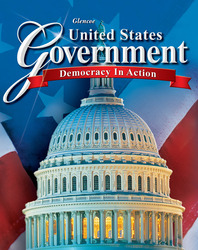
United States Government: Democracy in ActionChapter 16: Political PartiesChapter Overviews[logo] Essential Question Section 1 Development of Parties The United States has two major parties—the Republican Party and the Democratic Party. Minor or third parties rarely win major elections. They often form over a single issue, such as slavery. Others form over an ideology, such as the Communist Party USA. A third type is a splinter party that often forms over a political figure, such as Theodore Roosevelt's Bull Moose Progressive Party. Third parties often influence politics by promoting new ideas. Section 2 Party Organization The basic local party unit is the precinct, several of which comprise a larger district called a ward. The next level is the party's county committee. Representatives from the county committee make up the state central committee, which chooses the state party chairperson. The state committee helps elect the party's candidates for state government offices. The national party organization includes the national convention and the national committee. Political parties recruit candidates for public office. They also bring important issues to the public's attention. Congress and state legislatures are organized and carry on their work on the basis of party affiliation. Political parties also dispense patronage to their members. The party that is out of power in the legislative or executive branches assumes the role of "watchdog" over the government. Section 3 Nominating Candidates Before the start of the national convention, the national committee tells each state party organization how many votes (delegates) the state will have. Several committees at the convention determine the rules, approve state delegates, and write the party's platform. At recent conventions, there is no mystery about who will be nominated, but in past conventions, uncommitted delegates were actively wooed by the candidates. During the convention balloting, the chair of each state delegation calls out the delegates' votes. The candidate who receives a majority becomes the nominee for the party in the general election. |  |















